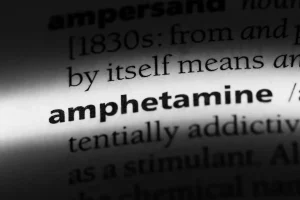
Behavioral treatments—also known as alcohol counseling, or talk therapy, and provided by licensed therapists—are aimed at changing drinking behavior. Examples of behavioral treatments are brief interventions and reinforcement approaches, treatments that build motivation and teach skills for coping and preventing https://ecosoberhouse.com/ a return to drinking, and mindfulness-based therapies. A health care provider might ask the following questions to assess a person’s symptoms. If your pattern of drinking results in repeated significant distress and problems functioning in your daily life, you likely have alcohol use disorder.
If you suspect someone has alcohol poisoning …
- In turn, groups with such beliefs would have had greater solidarity, allowing them to outcompete or absorb other groups.
- As emphasized by Wilson and Marlatt, there remain limitations to exclusive reliance on self-report emotion measures when considering the impact of alcohol in individuals or in groups.
- Evaluate the coverage in your health insurance plan to determine how much of the costs your insurance will cover and how much you will have to pay.
What’s more, as Christine Sismondo writes in America Walks Into a Bar, by kicking the party out of saloons, the Eighteenth Amendment had the effect of moving alcohol into the country’s living rooms, where it mostly remained. This is one reason that, even as drinking rates decreased overall, drinking among women became more socially acceptable. Public drinking establishments had long been dominated by men, but home was another matter—as were speakeasies, which tended to be more welcoming. Rorabaugh argued that this longing for oblivion resulted from America’s almost unprecedented pace of change between 1790 and 1830.
- People may use alcohol as a way to numb their emotions or escape from mental health symptoms.
- Social drinking and alcoholism are different patterns of alcohol consumption.
- Remember that your loved one is ultimately responsible for managing their own illness.
- His early studies used a low dose of alcohol and the balanced placebo factorial design that had been popularized by Marlatt (e.g., Marlatt, Deming, & Reed, 1973), in which ethanol content and instructions regarding the alcohol content of the beverage were orthogonally manipulated.
Signs and symptoms of alcoholism (alcohol dependence)
We may be paid a fee for marketing or advertising by organizations that can assist with treating people with substance use disorders. Wildcat said the social drinking and drinking problem water problems affect economic development on the reserve. Dr Merron, alas, thinks it’s unlikely that the NHS will have an epiphany anytime soon.
What are the Warning Signs of Alcoholism?
These person-level differences also may prove useful, however, in developing models to understand who is most likely to transition from a “normal” drinking habit to a drinking problem. In sum, when studied in a social context alcohol appears to enhance social bonding. Such findings accord with animal models that also suggest that moderate doses of ethanol enhance social functioning (Blanco-Gandia, Garcia, Garcia-Pardo, Montagud-Romero, & Rodriguez-Arias, 2015). Human alcohol research that incorporates social context into their designs holds promise for understanding the underlying mechanisms that mediate these effects of alcohol and offers insight regarding individual differences that may moderate alcohol’s effects. The view that much of the emotion-altering effects of drinking are expectancy–based, which was popular in the late 1970’s, is on the wane. Yet complete dismissal of dosage-set effects of drinking may be premature, especially as interest in placebo responding in general has arisen in other areas of science and medicine (Kirsch, 1999).

Professional Associations of Medical and Nonmedical Addiction Specialists

As with the TRT, however, laboratory findings regarding positive emotional enhancement have proven to be inconsistent (Sayette, Fairbairn, & Creswell, 2016). Fairbairn and Sayette (2014) recently outlined a social attributional framework for examining the impact of alcohol on social anxiety, and on emotion more generally. This framework builds on the work of Curtin, Hull and their colleagues to suggest that alcohol will enhance mood when negative outcomes are perceived to be unstable and/or self-relevant (e.g., meeting strangers at a bar). While nearly all naïve-participant studies reveal positive effects of alcohol on emotion, only a small minority of confederate studies find evidence of significant alcohol-related emotional enhancement.


Behavioral therapies can help people develop skills to avoid and overcome triggers, such as stress, that might lead to drinking. Medications also can help deter drinking during times when individuals may be at greater risk of a return to drinking (e.g., divorce, death of a family member). Many people with alcohol use disorder hesitate to get treatment because they don’t recognize that they have a problem. An intervention from loved ones can help some people recognize and accept that they need professional help. If you’re concerned about someone who drinks too much, ask a professional experienced in alcohol treatment for advice on how to approach that person.
- Everyone should know the warning signs of alcoholism and not ignore when social drinking goes too far.
- Not just for drinkers and their loved ones, but for society as a whole.
- Alcohol is a toxin — too much can damage your body and impact your health.
- Tara Healthcare LLC is a technology platform which connects patients to licensed providers in the state in which they live.
- Alcohol is a drug, and alcoholism is every bit as damaging as drug addiction.
Physical and mental health are inextricably linked, as is made vivid by the overwhelming quantity of research showing how devastating isolation is to longevity. Stunningly, the health toll of social disconnection is estimated to be equivalent to the toll of smoking 15 cigarettes a day. While it involves alcohol with the primary purpose of socializing, relaxation, and enjoyment rather than getting intoxicated or dealing with stressful situations, it could evolve into problem drinking and, in more severe cases, alcoholism. Therefore, it is crucial to identify warning signs that can tell us if social drinking is transitioning into an alcohol-related problem. Finally, understanding the benefits of social drinking and its risks may help emphasize the need for responsible social drinking. Problem drinkers display clear differences between their drinking habits and those of alcoholics.

